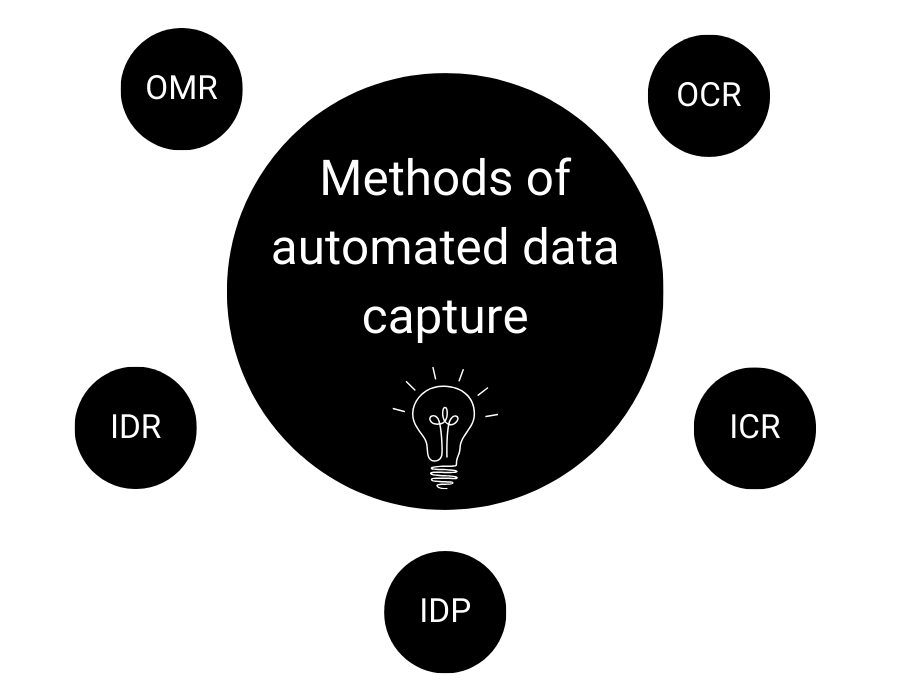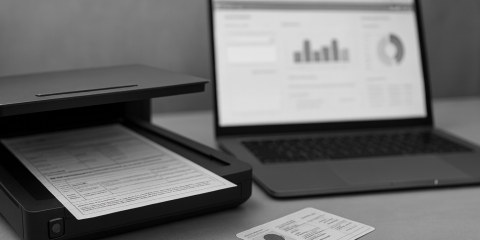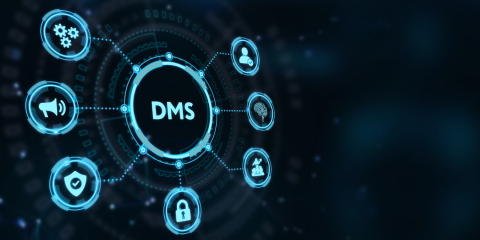Automated data capture: What is the difference between OCR, OMR, ICR and how do they work?

Automated data capture plays a vital role in extracting structured and unstructured information from various documents, whether they are in paper or electronic form.
Understanding and keeping track of all these new technologies is challenging.
But no worries, in this article you will learn more about it.
What is data capture?
2.5 quintillion bytes of data that people create every day is mostly unstructured data.
Data capture is the process of extracting these structured and unstructured information from any type of document (paper or electronic). This information is then converted into a machine-readable format (“called data”) so that it can be processed by a computer. This way it will be stored, structured, processed and used more efficiently.
New technologies and automation take this process to a whole new level.
The Data capture process
This is how a typical data capture process works:
- Data is received, for example in form of an image, an email or a document.
- This data is then extracted and collected (either manually or automatically) so that it can be stored in a digital format.
- The extracted data can then be used for further processes.
Manual or automated data capture
So Data can be captured in two ways - either either manually or automatically.
Manual data capture has several disadvantages. It is time consuming and error prone. The quality of the captured data is limited by the human who is extracting and collecting the data. Therefore it is more suitable for companies with small amounts of data. But even for these companies, automated data collection is more efficient in the long term.
As you might guess, automated data capture uses technology that enables machines to automatically recognise and collect data and turn it into valuable insights. The data is accurately and completely transferred to your system. With OCR Automation you speed up your processes and increase the productivity of your team.
Therefore with automated data collection you can extract and capture data from various formats with high accuracy and within seconds. This significantly increases the scalability.
What is the difference between the methods of automated data capture?
Various technologies and methods enable automatic data capture. These include for example OCR, ICR, IDP, OMR, web scraping and smart cards. But what is it about, what are these different methods used for and how do they work?
 X
X
OCR - Optical Character Recognition
OCR is used to extract text from documents, images, PDF files, files, etc. by scanning them. This collected information is converted into machine-readable data for further use, such as processing, editing and recording.
Essentially, this technology identifies text and characters for example within an image of a scanned paper document and then translates it into a digital format like a PDF or a Microsoft Word document and storing it on a digital device to edit or refer to later on.
In summary, it is a form of automated data entry where information is extracted directly from scanned images and stored on a computer with the help of an OCR device. There is no need for any manual data entry.
Optical Character Recognition is often used in industries that generate large amounts of data, such as logistics, healthcare, finance, insurance, banking and more.
ICR - Intelligent Character Recognition
Intelligent Character Recognition is a subset of OCR. This technology is able to scan documents with handwritten text, identify data from complex handwriting styles and to convert it into machine-readable data.
ICR is considered more advanced than OCR because it deals with handwriting recognition, which is much more complex and detailed.
So an ICR software has to scan, read and interpret. This is why the technology is constantly evolving, as there are always new patterns to learn. The software contains an AI-based self-learning system called a neural network. When this system is introduced to a new document, it automatically learns the style and pattern of the font on that document and updates its database with this knowledge. This helps the software predict new types of handwriting patterns with greater accuracy.
Many companies use ICR software to extract information from handwritten forms and store it digitally. Intelligent Character Recognition is often used by banks and financial institutions.
OMR - Optical Mark Recognition
Optical Mark Recognition automatically captures and processes information that exists in the form of optical marks on paper documents. After scanning the documents, the algorithm detects the location and recognises handwritten marks.
OMR is used in many applications to read and process data fast and efficiently. These include, for example, multiple choice tests, consumer feedback or surveys.
IDP - Intelligent Document Processing
Document processing the process of extracting information from documents (digital or physical) and storing that information on a computer. Using AI-based technologies combined with OCR, IDP is able to automate these document processing workflows.
Intelligent Document Processing extracts, classifies and verifies data automatically.
IDP also extracts and categorises unstructured information in order to make it easier to analyse.
IDR - Intelligent Document Recognition
This technology extends the capabilities of OCR. Intelligent Document Recognition allows extracting any form of data from any part of a document, including meta description.
IDR can interpret patterns and content in paper and electronic formats, recognising the beginning and end of documents, and sort them by categories. So it is able to capture any data and store it in a database.
So what is the difference between IDP and IDR?
IDR is a subset of IDP. Intelligent Document Recognition focuses mainly on capturing and extracting information from documents. It includes the ability to recognise and extract text, images and other data from different types of documents. IDR focuses more on recognising content and transforming it into structured data.
IDP, on the other hand, is a broader term that goes beyond text and data extraction. Intelligent Document Processing refers to the entire process of document processing, including the capture, extraction, validation, processing and integration of document data into business processes.
Conclusion
Clearly, automated data capture is the way forward, as it is not only much more suitable for today's businesses, but also offers many benefits. It increases speed and efficiency and minimises human error.
Technologies such as OCR, OMR, IDP, IDR and ICR enable this automatic, fast and efficient data capture. These are particularly useful when processing large volumes of documents.
With REEDR you get an efficient OCR software solution for automated, accurate and fast data capture.
Do you also want to capture your data more accurately and efficiently to improve your business?Do you have any questions about automated data capture or are you interested in receiving more information? Would you like to find out more about our OCR solution REEDR for your Salesforce CRM? Then contact us directly here.



